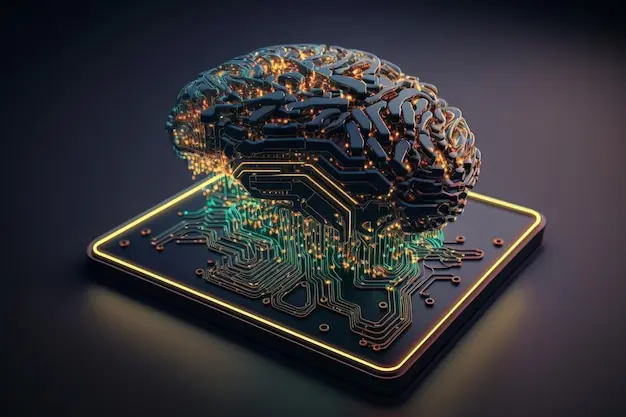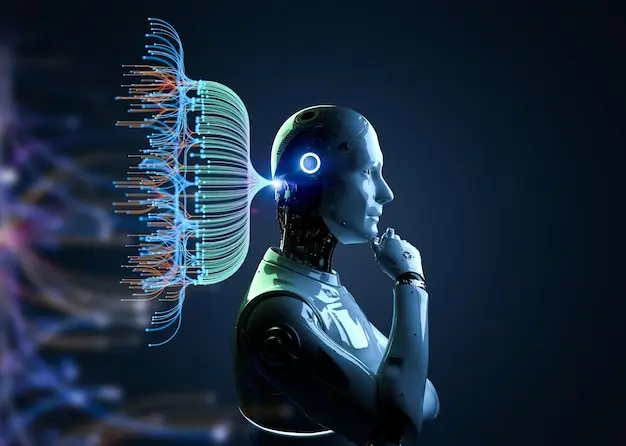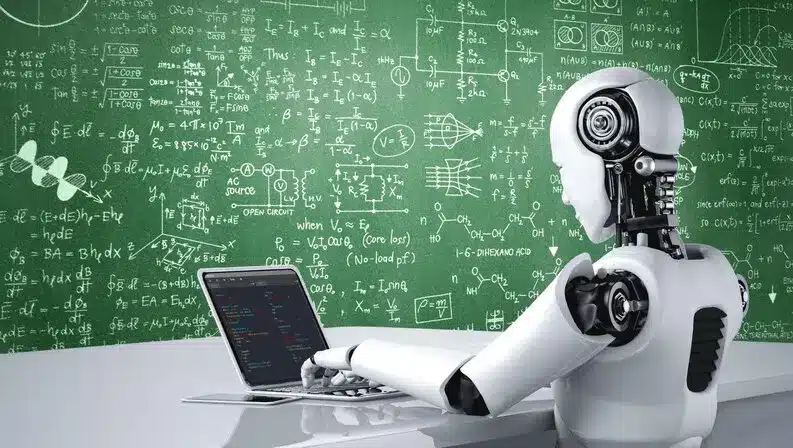
Introduction
Welcome to the beginner’s guide to Artificial Intelligence algorithms! In this comprehensive article, we will delve into the exciting world of machine learning and provide you with a solid foundation to understand the fundamentals of this cutting-edge technology. Whether you are a curious individual or a budding data scientist, this guide will equip you with the knowledge you need to navigate the vast landscape of machine learning algorithms.
What is Machine Learning?
Machine learning is a subfield of artificial intelligence (AI) that focuses on creating algorithms and statistical models capable of learning and making predictions or decisions without explicit programming.
It enables computers to analyze and interpret complex data, identify patterns, and improve their performance over time through iterative learning processes. By leveraging large datasets, machine learning algorithms can uncover valuable insights, automate tasks, and enhance decision-making processes.
The Importance of AI Algorithms
Artificial Intelligence algorithms form the backbone of machine learning systems. They enable machines to process vast amounts of data, identify patterns, and make accurate predictions or decisions. These algorithms power various applications across industries, including image and speech recognition, natural language processing, recommendation systems, fraud detection, and autonomous vehicles.
As businesses increasingly rely on data-driven insights to gain a competitive edge, understanding AI algorithms becomes crucial for professionals in diverse fields.
Supervised Learning: A Closer Look
Supervised learning is a type of machine learning where the algorithm learns from labeled data, meaning it has input features and corresponding output labels. The algorithm aims to find a mapping function that accurately predicts the output for new, unseen input data. Common supervised learning algorithms include linear regression, logistic regression, support vector machines, and decision trees.
Unsupervised Learning: Unlocking Patterns in Data
Unsupervised learning involves training machine learning algorithms on unlabeled data. Without specific output labels, these algorithms focus on discovering underlying patterns, structures, or relationships in the data. Unsupervised learning algorithms can perform tasks such as clustering, dimensionality reduction, and anomaly detection.
Popular unsupervised learning algorithms include k-means clustering, hierarchical clustering, and principal component analysis.
Reinforcement Learning: Teaching Machines to Learn from Experience
Reinforcement learning is a type of machine learning that involves an agent interacting with an environment and learning to make decisions based on feedback or rewards. The agent explores the environment, takes action, and receives feedback from the environment in the form of positive or negative rewards. Reinforcement learning algorithms aim to maximize cumulative rewards by iteratively learning from their actions and optimizing their decision-making processes.
Deep Learning: Mimicking the Human Brain
Deep learning is a subfield of machine learning inspired by the structure and function of the human brain. It involves the construction of artificial neural networks composed of multiple layers of interconnected nodes, called neurons.
These networks can learn hierarchical representations of data, allowing them to solve complex tasks such as image and speech recognition.

Deep learning has revolutionized various domains, including computer vision, natural language processing, and robotics.
Decision Trees: Making Sense of Choices
Decision trees are a simple yet powerful machine-learning algorithm that uses a tree-like structure to model decisions and their possible consequences. Each internal node represents a decision based on a specific feature, while each leaf node represents an outcome or a class label. Decision trees are easy to interpret, and their visual representation allows users to understand the decision-making process. They are commonly used for classification and regression tasks.
Random Forests: Combining the Power of Multiple Trees
Random forests are an ensemble learning method that combines multiple decision trees to make more accurate predictions. Each decision tree is trained on a random subset of the data, and the final prediction is determined by aggregating the predictions of individual trees.
Random forests are robust against overfitting and can handle large datasets with high dimensionality. They are widely used in various applications, including classification, regression, and feature selection.

Support Vector Machines: Separating the Data
Support Vector Machines (SVM) is a popular supervised learning algorithm used for classification and regression tasks. SVM aims to find an optimal hyperplane that separates data points into different classes or predicts continuous values.
It maps data into a higher-dimensional feature space and identifies the hyperplane with the maximum margin between different classes. SVM has proven effective in solving complex classification problems and is particularly useful when dealing with high-dimensional data.
K-Nearest Neighbors: Neighbors Matter
K-Nearest Neighbors (KNN) is a simple yet powerful algorithm used for classification and regression tasks.
It works based on the principle that data points with similar characteristics tend to belong to the same class or have similar values. KNN determines the class or value of a new data point by considering the labels or values of its k nearest neighbors. KNN is non-parametric and does not make any assumptions about the underlying data distribution.
Linear Regression: Predicting Continuous Values
Linear regression is a fundamental supervised learning algorithm used for predicting continuous values. It establishes a linear relationship between input features and the corresponding output labels. Linear regression aims to find the best-fit line that minimizes the difference between predicted and actual values. It provides insights into the relationship between variables and is widely used for tasks such as sales forecasting, price prediction, and trend analysis.
Logistic Regression: Classifying Data
Logistic regression is a binary classification algorithm used to predict the probability of an event occurring. It models the relationship between input features and the likelihood of belonging to a specific class. Logistic regression estimates the probability using the logistic function, also known as the sigmoid function. It is widely used in various fields, including healthcare, finance, and social sciences, for tasks such as disease diagnosis, fraud detection, and sentiment analysis.
Naive Bayes: Probability at Play
Naive Bayes is a probabilistic algorithm used for classification tasks. It is based on Bayes’ theorem and assumes that the features are conditionally independent of each other, given the class label. Naive Bayes calculates the probability of each class for a given set of features and assigns the data point to the class with the highest probability. Despite its simplifying assumption, Naive Bayes has shown strong performance in text classification and spam filtering.

Principal Component Analysis: Simplifying Complex Data
Principal Component Analysis (PCA) is a dimensionality reduction technique used to simplify complex datasets. It identifies the most important features or components that capture the maximum variance in the data. By projecting the data onto a lower-dimensional space, PCA allows for visualization, noise reduction, and improved computational efficiency. PCA has applications in various domains, including image processing, genetics, and finance.
K-Means Clustering: Grouping Similar Data Points
K-Means Clustering is an unsupervised learning algorithm used for grouping similar data points into clusters. It partitions the data into k clusters based on the similarity of their features. K-Means works by iteratively assigning data points to the nearest centroid and updating the centroid’s position. It is widely used for customer segmentation, image compression, and anomaly detection.
Neural Networks: Unleashing the Power of Deep Learning
Neural networks, also known as artificial neural networks (ANN), are computational models inspired by the structure and function of biological neural networks. They consist of interconnected nodes, called neurons, organized into layers. Neural networks can learn from data, adapt to changing inputs, and generalize to unseen examples. They are capable of solving complex problems, such as image recognition, natural language processing, and time series prediction.
Convolutional Neural Networks: Analyzing Images and Visual Data
Convolutional Neural Networks (CNN) are a specialized type of neural network designed for analyzing images and visual data. They leverage the concept of convolution to extract local features from the input data. CNNs consist of convolutional layers, pooling layers, and fully connected layers. They have revolutionized computer vision tasks, including object detection, image classification, and facial recognition.
Recurrent Neural Networks: Understanding Sequential Data
Recurrent Neural Networks (RNN) are a class of neural networks designed to process sequential data, such as time series or natural language. RNNs have a unique architecture that allows them to retain information from previous steps and consider the context when making predictions. They are widely used in tasks like speech recognition, machine translation, and sentiment analysis.
Generative Adversarial Networks: Creating New Content
Generative Adversarial Networks (GANs) are a class of deep learning models consisting of two components: a generator and a discriminator. GANs aim to generate new content, such as images, music, or text, that is indistinguishable from real data. The generator generates synthetic samples, while the discriminator tries to distinguish between real and fake samples.
Through an adversarial training process, GANs learn to create increasingly realistic and high-quality content.
Natural Language Processing: Understanding Human Language
Natural Language Processing (NLP) is a branch of Artificial Intelligence that focuses on the interaction between computers and human language. It involves the development of algorithms and models that enable machines to understand, interpret, and generate human language. NLP techniques are used in various applications, including sentiment analysis, machine translation, chatbots, and information extraction.
Reinforcement Learning Algorithms: Making Smart Decisions
Reinforcement learning algorithms are designed to enable machines to learn through trial-and-error interactions with an environment. These algorithms learn to maximize cumulative rewards by taking actions that lead to favorable outcomes. Popular reinforcement learning algorithms include Q-learning, Deep Q-Networks (DQN), and Proximal Policy Optimization (PPO). Reinforcement learning has found applications in robotics, game-playing, and autonomous systems.
Model Evaluation and Validation: Measuring Performance
Model evaluation and validation are essential steps in machine learning to assess the performance and generalization capabilities of trained models. Various metrics are used to evaluate the performance of classification, regression, and clustering algorithms. Common evaluation metrics include accuracy, precision, recall, F1-score, mean squared error (MSE), and silhouette coefficient.
Cross-validation techniques, such as k-fold cross-validation, are used to validate models on different subsets of data.
Overfitting and Underfitting: Striking the Right Balance
Overfitting and underfitting are common challenges in machine learning. Overfitting occurs when a model learns the training data too well, resulting in poor generalization to unseen data. Underfitting, on the other hand, happens when a model fails to capture the underlying patterns in the data.
Techniques like regularization, early stopping, and increasing the complexity of the model can help strike the right balance and prevent overfitting or underfitting.
Hyperparameter Tuning: Optimizing Algorithm Performance
Hyperparameters are parameters that are not learned by the model itself but are set by the user before training. They determine the behavior and performance of machine learning algorithms. Hyperparameter tuning involves selecting the optimal combination of hyperparameters to achieve the best performance.
Techniques like grid search, random search, and Bayesian optimization are commonly used to search the hyperparameter space efficiently.
The Future of AI Algorithms
The field of Artificial Intelligence algorithms is constantly evolving, driven by advancements in technology and the increasing availability of data. The future holds promising developments in areas such as explainable AI, transfer learning, meta-learning, and reinforcement learning. As Artificial Intelligence becomes more pervasive in our daily lives and industries, understanding and leveraging AI algorithms will continue to play a pivotal role in driving innovation and solving complex problems.
Resources for free courses to learn Artificial Intelligence
Crash Course Artificial Intelligence
What are you trying to do with AI today?
Class Central: Intro to Deep Learning
Frequently Asked Questions
Q: What is the role of AI algorithms in machine learning?
AI algorithms form the core of machine learning systems. They enable machines to process data, learn patterns, and make predictions or decisions. AI algorithms power various applications in image recognition, natural language processing, recommendation systems, and more.
Q: How do AI algorithms learn from data?
AI algorithms learn from data through a process called training. They analyze labeled or unlabeled data, identify patterns, and adjust their internal parameters to optimize performance. The learning process involves minimizing errors and maximizing accuracy or reward signals.
Q: What are some popular applications of machine learning algorithms?
Machine learning algorithms have diverse applications across industries. They are used in autonomous vehicles, fraud detection systems, personalized recommendations, medical diagnosis, and predictive maintenance, among others.
Q: Are machine learning algorithms capable of making decisions on their own?
Machine learning algorithms can make decisions based on patterns and data analysis, but they do not possess human-like consciousness or reasoning capabilities. Their decisions are driven by statistical models and predefined rules learned from training data.
Q: How can I get started with machine learning and AI algorithms?
To get started with machine learning and AI algorithms, you can explore online courses, tutorials, and resources. Programming languages like Python and libraries such as sci-kit-learn and TensorFlow are widely used in the field. Hands-on projects and practice are crucial for gaining practical experience.
Q: What are the ethical considerations in the development and use of AI algorithms?
The development and use of AI algorithms raise important ethical considerations. Issues such as bias, privacy, transparency, and accountability need to be addressed to ensure fair and responsible use of AI technology.
You may also be interested in reading The Rise of AI: How is Transforming Industries
Conclusion
Machine learning algorithms are the backbone of AI systems, enabling computers to learn, analyze data, and make predictions or decisions. In this beginner’s guide to AI algorithms, we have explored various types of machine learning algorithms, from supervised and unsupervised learning to deep learning and reinforcement learning.
We have also touched upon important concepts like model evaluation, overfitting, hyperparameter tuning, and the future of AI algorithms. With the rapid advancements in AI technology, understanding and leveraging these algorithms will continue to be a valuable skill in the ever-evolving digital landscape.





Thank you for your sharing. I am worried that I lack creative ideas. It is your article that makes me full of hope. Thank you. But, I have a question, can you help me?